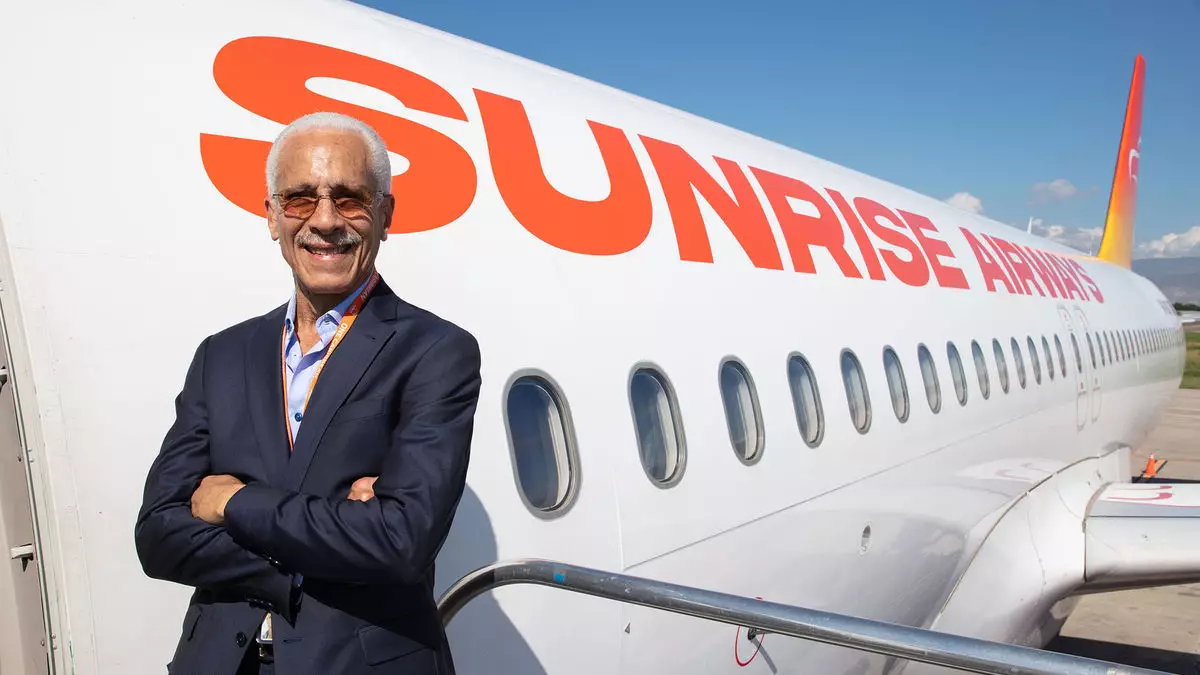As the Caribbean heads towards 2025, there’s palpable excitement regarding the potential transformation of interisland tourism. Historically, travelers have faced various obstacles—such as expensive airfare, cumbersome layovers, and a limited array of flight paths—that have curtailed the region’s tourism potential. However, stakeholders within the Caribbean tourism industry are optimistic that new initiatives aimed at enhancing connectivity will ease these burdens, allowing both international and regional travelers to experience the diverse offerings of neighboring islands. The Caribbean, with its beautiful landscapes and rich cultures, stands at the brink of becoming a prime multi-destination tourism hotspot, akin to Europe.
A key component in facilitating this sea change is the issue of airlift. According to Nicola Madden-Greig, former president of the Caribbean Hotel & Tourism Association (CHTA), ensuring adequate and affordable airlift is paramount for the region’s tourism expansion. Madden-Greig pointed out, “We’re seeing that coming down in real-time.” The industry is currently witnessing regional airlines—such as InterCaribbean, Cayman Airways, and Caribbean Airlines—working to bolster their networks. These efforts aim to simplify travel logistics, making it easier for travelers to hop between islands without unnecessary hurdles.
The integration of airlines into a cohesive network is central to this vision. For instance, Bahamas Air plans to enter the Jamaican market, which reflects an intent to improve accessibility and strengthen multi-island propositions. The goal is clear: to elevate the Caribbean’s global standing as an enticing multi-destination option, encouraging travelers to explore the islands just as they might explore varied countries in Europe.
Leveraging Diversity in Tourism Experiences
Given the Caribbean’s rich tapestry of cultures, ecosystems, and experiences, showcasing its diversity could be crucial. Madden-Greig’s recent organization of a familiarization trip—a journey through Barbados, St. Lucia, Jamaica, and the Cayman Islands—speaks volumes about the strategic drive toward promoting inter-island connections. Her perspective is insightful; “We haven’t positioned the Caribbean that way before… There’s absolutely a different look and feel, energy, culture, and cuisine that varies per destination.”
Nevertheless, conveying this message effectively to consumers and travel advisors presents its own set of challenges. There’s a compelling need to accentuate the unique features that differentiate each island—from lush mountainous landscapes to serene flat beaches—so that potential travelers are enticed by varied options all within the Caribbean. Such strategic advances are anticipated to push the message of multidestination travel in an increasingly competitive global tourism market.
Despite significant advancements, the Caribbean’s interisland travel continues to face formidable challenges. Claudio Buncamper, COO of Sunrise Airways, openly recognized, “Travel has been extremely difficult,” highlighting that network expansion hasn’t entirely eradicated logistical issues. One of Sunrise’s primary goals is to alleviate the need for overnight stays in hub cities, which mar the travel efficiency of interisland trips. The frustrations with the current route structures illustrate the complexity of the Caribbean aviation landscape, with multiple airlines still struggling to coordinate their efforts seamlessly.
Cost is another elephant in the room. The high operational expenses associated with shorter flights factor heavily into ticket prices, often pricing out many potential travelers. Buncamper laments that taxes levied by individual governments can account for up to 60% of a ticket’s cost, further compounding the restrictions placed on interisland travel. Such barriers may inhibit the industry’s potential to attract a burgeoning tourism market.
Working Towards an Inclusive Future
Evidently, despite the inertia, hope persists. Industry experts, including Steve Bennett from Uncommon Caribbean, advocate for reducing inter-island travel taxes and nurturing open-skies agreements. He astutely points out, “We shoot ourselves in the foot as a region.” Without cooperative measures, the Caribbean risks missing out on opportunities that would bolster intra-regional economic growth and tourism.
Fortunately, developments in regional airline strategies herald more promising prospects. Airlines such as InterCaribbean and LIAT 2020 are ramping up services, and while the landscape remains complicated, the momentum is there for improvement. As 2025 approaches, industry leaders and policymakers will need to work in tandem, focusing on collaboration rather than competition—a shift that could potentially transform the Caribbean’s tourism narrative.
Significant strides are being made to enhance interisland travel across the Caribbean. With intensified cooperation, an emphasis on reducing travel costs, and a determined focus on marketing the region as a multidestination experience, 2025 could indeed represent a significant turning point for Caribbean tourism. The collaborative spirit necessary for this evolution is essential, as it could redefine regional travel and allow visitors to immerse themselves in the vibrant tapestry that the Caribbean islands collectively offer. The potential for success is immense, but it demands a concerted effort from all stakeholders to break down the barriers that have historically hindered progress.

